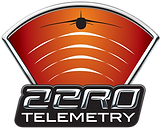Defense Industry & Hollywood Take Cues from Each Other By Katrina C. Arabe

In two productions co-starring the defense industry and Hollywood, movie-inspired technology is addressing one of the military's biggest problems--information overload--and an aerospace engineer is redefining movie model-making:
Scene One: Hollywood Gives the Defense Industry Some Ideas
If you've watched 'Minority Report,' the 2002 sci-fi movie starring Tom Cruise, you probably remember the scenes when Cruise's detective character donned gloves that allowed him to move data around on giant screens. It was almost as if he were conducting an orchestra. In any case, it was an artistic and memorable way to manipulate information. The fantasy technology certainly made an impression on Pamela Barry, then a Raytheon Co. engineer, who envisioned the system for the military. In particular, she thought it could help commanders sort through piles of data in the midst of battle. Raytheon then contacted the scientist who conceptualized it for the movie, John Underkoffler, and started to work on bringing the system from the big screen to the battlefield, says Allan Mattson, the defense company's director of national space programs.
According to Raytheon, "gesture technology" will address one of the military's most vexing problems--information overload. Commanders are often bombarded with information from satellites, sensors and soldiers. To help them manage this barrage of data, Underkoffler and Raytheon are developing ways to visually present and allow users to easily maneuver data to accelerate combat responses. This means freedom from keystrokes and mouse clicks, says Underkoffler. Raytheon, which licensed the technology from Underkoffler and presented it to Air Force and intelligence officials this month, sees it being utilized in future command centers. Scene Two: Aerospace Engineer Makes an Impression on Hollywood Aircraft engineer Joe Bok (also spelled Bock), who normally produces flying drones for the military, didn't want to create cheesy-looking model airplanes for 'The Aviator,' the epic film biography of Howard Hughes. Bok wanted to think big--literally--creating extraordinarily large radio-controlled models that would not only look realistic but also fly without crashing--unlike many in Hollywood's storied past. "I've been out here for 20 years and I know almost everyone who has ever tried to fly an airplane for a movie," says Bok, a long-time area resident. "And all the models have crashed, and they've all looked hokey."
In fact, Bok, head of Aero Telemetry Corp., was so sure that he could build model planes that would not crash, he refused to follow a standard movie contract stipulation requiring that duplicates of all models be built. By adhering to classical aerodynamic theory and building model planes of considerable size and heft, he believed he could reach the lofty heights to which he aspired.
Turns out he was right. "We didn't crash a model and didn't have so much as a glitch," he tells Design News. "We never lost control of the planes for even a split second."
Overcoming tremendous time constraints and tricky design challenges, he and a staff of six engineers built models of unusual size, the largest being a 30-foot-wide, 648-lb. version of Hughes' infamous XF-11 reconnaissance airplane. Even Bok's smaller models were extraordinarily big. His model of Hughes H-1B racer had an 18-foot wingspan and tipped the scales at 450 lbs.
And he expects his work to leave a mark on Hollywood. "This is groundbreaking; Hollywood has never used models this big," Bok tells Design News. "It's going to change the way these kinds of special effects are done, for years going forward."


